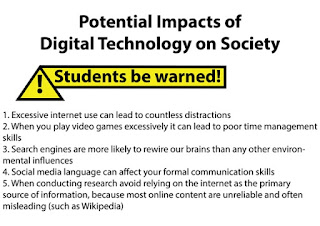1. Crocket, Jukes and Churches, 2011. The Five Fluencies Of Digital
Citizenship. Available On The Student Manual [ https:// portal:
iie.ac.za/student/20 Manuals/DIGC 5110-Digital-Citizenship].
2. Gartner, 2015. Available Online [ www.gatner.com/marketing/digital/research/commerce]
3. Heller, J. 2013. The New Evidence Pulls In Highest Animal Planet Rating Ever. Available Online [ www.ibtimes.com/mermaids-hoax-documentary-new-evidence-pulls-highest-animal-planet-ratings-ever-128535.
4. https://ew.wikipedia.org/wiki/mermaids. The Mermaids; The Body Found ( Press Release).
5. https://sites.google.com/site/digital/citizenship/ferris/digital-rights-and-responsibility. The Digital Rights and Responsibility.
2. Gartner, 2015. Available Online [ www.gatner.com/marketing/digital/research/commerce]
3. Heller, J. 2013. The New Evidence Pulls In Highest Animal Planet Rating Ever. Available Online [ www.ibtimes.com/mermaids-hoax-documentary-new-evidence-pulls-highest-animal-planet-ratings-ever-128535.
4. https://ew.wikipedia.org/wiki/mermaids. The Mermaids; The Body Found ( Press Release).
5. https://sites.google.com/site/digital/citizenship/ferris/digital-rights-and-responsibility. The Digital Rights and Responsibility.
6. Ribble, M. 2011. The Elements Of Digital Access.Available On The Student
Manual
[ https:// portal: iie.ac.za/student/20 Manuals/DIGC 5110-Digital-Citizenship].
7.Ribble, M. 2011. The 9 Elements Of Digital Citizenship. Ribble, M. 2011. Available On The Student Manual [https:// portal: iie.ac.za/student/20 Manuals/DIGC 5110-Digital-Citizenship].
[ https:// portal: iie.ac.za/student/20 Manuals/DIGC 5110-Digital-Citizenship].
7.Ribble, M. 2011. The 9 Elements Of Digital Citizenship. Ribble, M. 2011. Available On The Student Manual [https:// portal: iie.ac.za/student/20 Manuals/DIGC 5110-Digital-Citizenship].
9. https://digiteen.wikispaces.com/Digital+Health+and+Wellness.[Accessed: 20 June 2015]
10. http://networketiquette.net/netiquette/business-netiquette-rules/ Accessed on 20 June 2015.
11. Stephen, N.2014 .The 10 most common Internet Crimes
Available Online[http://www.complex.com/pop-culture/2012/11/the-10-most-common-internet-crime/
] Accessed on 20 / 06 / 2015.
12. https://sites.google.com/site/digital/citizenship
& Ferris/ digital-rights-and-responsibility. [Accessed on: 22 June 2015].13. Digital Citizenship Module Manual, 2015, 85. 10 Points Of Digital Netiquette.
14. Plauts, J. 2012. 11 Myths The U.S Government Has Addressed. Available Online [http://mentalfloss.com/article/31161/are-mermaids-real-11-myths-us-government-has-addressed] [Accessed: 20 June 2015].









